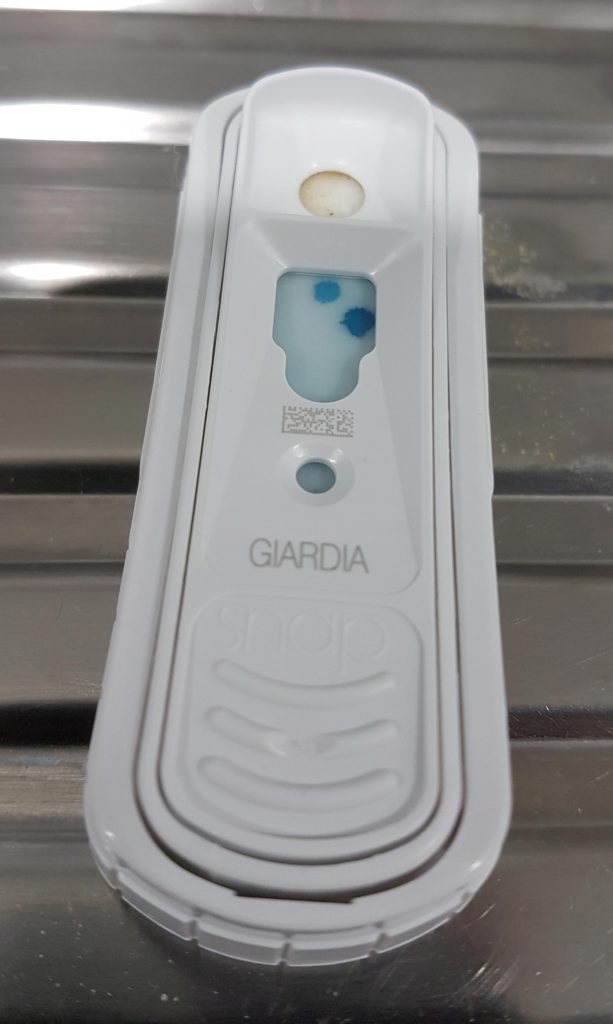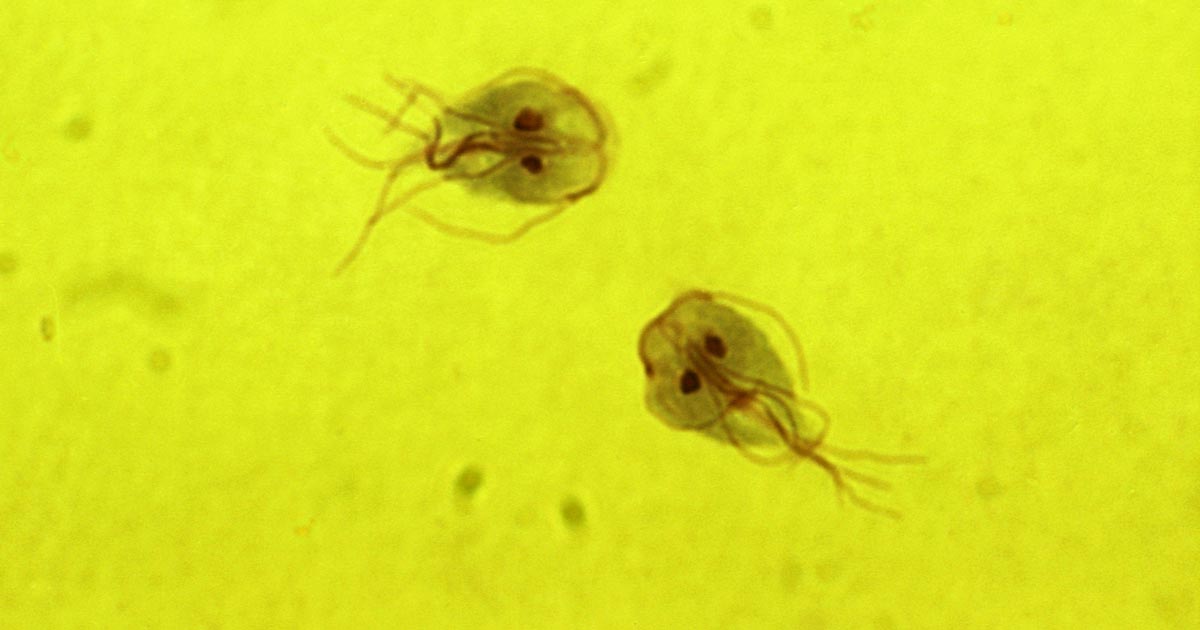Following last week’s discussion about pancreas-specific lipase tests, this week we look at Giardia SNAP tests.
Giardia is an important differential diagnosis in domestic species presenting with gastrointestinal disease, with a reported prevalence varying between 10% in household dogs and up to 100% in canine shelters and breeding colonies.

Younger animals – particularly younger than six months – and the presence of both acute and chronic diarrhoea have been found to have a higher likelihood to be tested positive for Giardia. However, the accurate identification of giardiasis continues to be problematic, particularly in chronic cases.
Several reasons exist for this:
- The shedding of cysts is often intermittent.
- Excretion of coproantigen may continue for several weeks, despite resolution of clinical infection. This is because it is a protein expressed by the organism during cyst formation, not the whole organism.
- Reinfection can occur after a period of clinical resolution.
- Chronically infected animals can often be asymptomatic.
In-house test
The Giardia SNAP test is an in-house test that detects faecal Giardia antigens. Although this test boasts to have both a high sensitivity and high specificity – 95% and 99.3%, respectively – be cautious in interpreting the results as they are based on a population with high disease prevalence (100%), which is not characteristic in most general populations.
In a prospective study with naturally acquired canine chronic subclinical giardiasis by Rishniw et al (2010), it was found this test has little value as a screening test because of its low positive predictive value (probability a positive result being a true positive), especially when the prevalence of disease is low (10% or less).
This means a positive result is substantially more likely to be a false positive, supporting the complicating factor of persistent coproantigen beyond clinical resolution of disease.
High negative predictive value
Despite this, the test has a high negative predictive value – a negative result being truly negative – meaning it is useful in helping rule out the disease.
In a nutshell, consider your patients’ likely risk of infection. If the risk of giardiasis is low, a negative result helps you rule out the disease, but a positive result is non-conclusive due to the high risk of false positive. However, if the risk of disease is high – for example, puppies from shelters or breeding colonies – a positive test will help confirm the diagnosis.
With regards to tracking patients treated for Giardia, if clinical signs have resolved, due to the high chance of false positives, repeating the test does not provide valuable information.


Leave a Reply